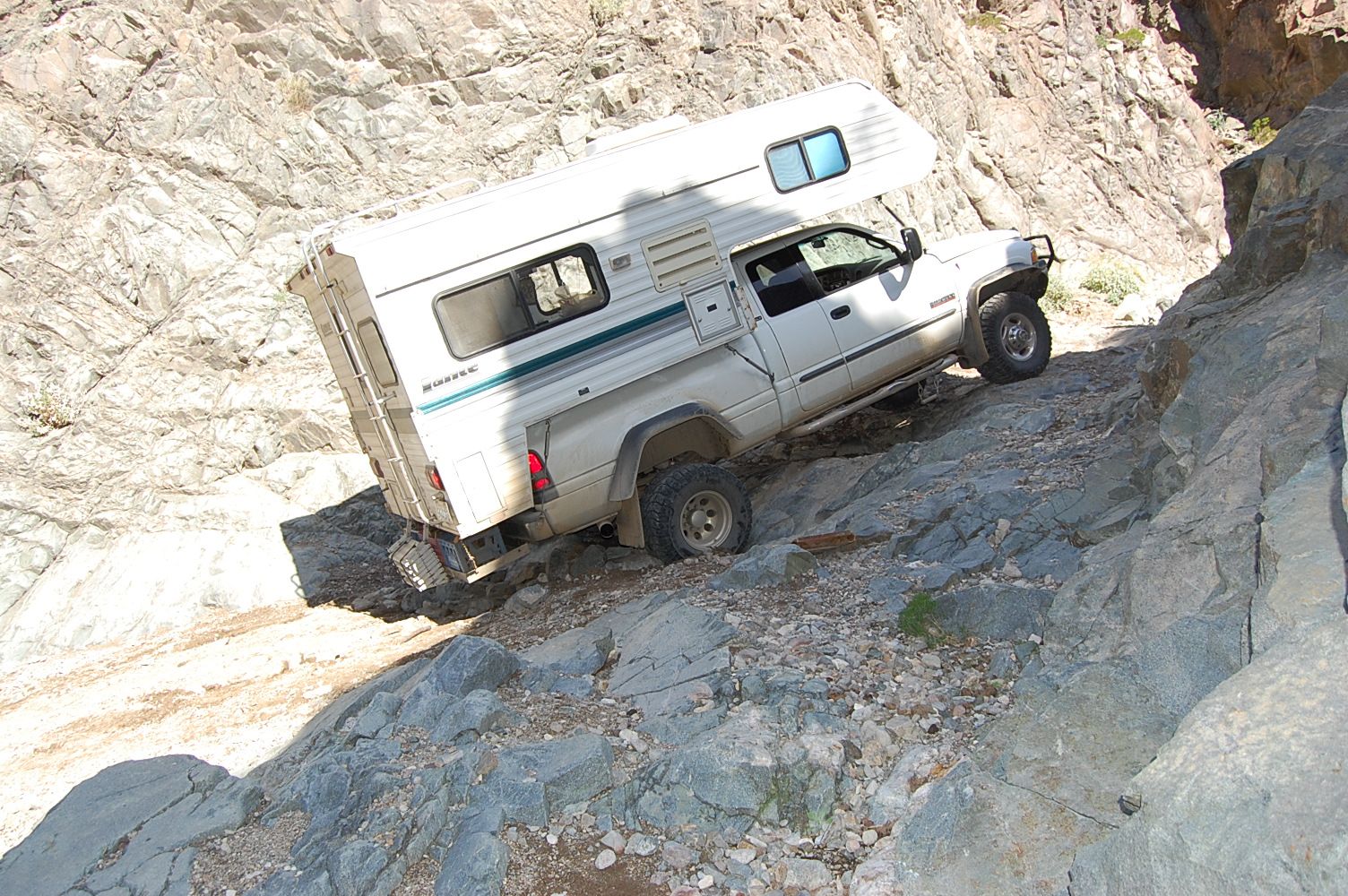jefe 4x4 wrote:
In a class C version there is no body to remain rigid so the frame will twist and take the RV part with it, pulling it apart little by little.
Jeff,
If your son wasn't so set on a Sprinter chassis, some of the above issue can be minimized by looking for a small Class C special ordered on a 4X4 chassis "too heavy duty" for the Class C's overall weight.
I'm not sure about the Chevy 4500 cutaway van chassis versus the Chevy 3500 cutaway van chassis ... but per it's detailed specs for at least our chassis year, the Ford E450 cutaway van chassis actually has thicker steel used in it's frame than the Ford E350 cutaway van chassis.
That's one reason we bought our small Class C on the optional E450 chassis ... to get a stiffer frame versus it's coach weight so as to help keep the frame as much as possible a flat plane under the rigidly attached coach structure. We sometimes take our rig moderately off-pavement and wanted the additional stiffness on rutted dirt roads. BTW, it's of course a given that one doesn't want to take a Class C with slides on rough roads.
A main problem I see with using cutaway versions of the Sprinter and similar van chassis here in the U.S. to build Class Cs on is - their lack of offering a 14K to15K GVWR rated cutaway chassis. Much of the Class C U.S. market needs a bit heavier rated chassis than 10K to 12K. There is a large U.S. market segment that prefers 27 foot to 31 foot Class C rigs ... and those can't be built on a Sprinter 3500 dually. Also, not having a heavier GVWR rating option available for the Sprinter and similar cutaway van chassis versions prevents doing what we did going with the Ford E Series ... buying a small Class C coach but on the heavier rated chassis for extra off-pavemnet viability.
Regarding the departure angle at the rear of a Class C -> this can of course be enhanced by using (non-stock) tires as tall as possible to gain ground clearance. We did this too on our Class C.

